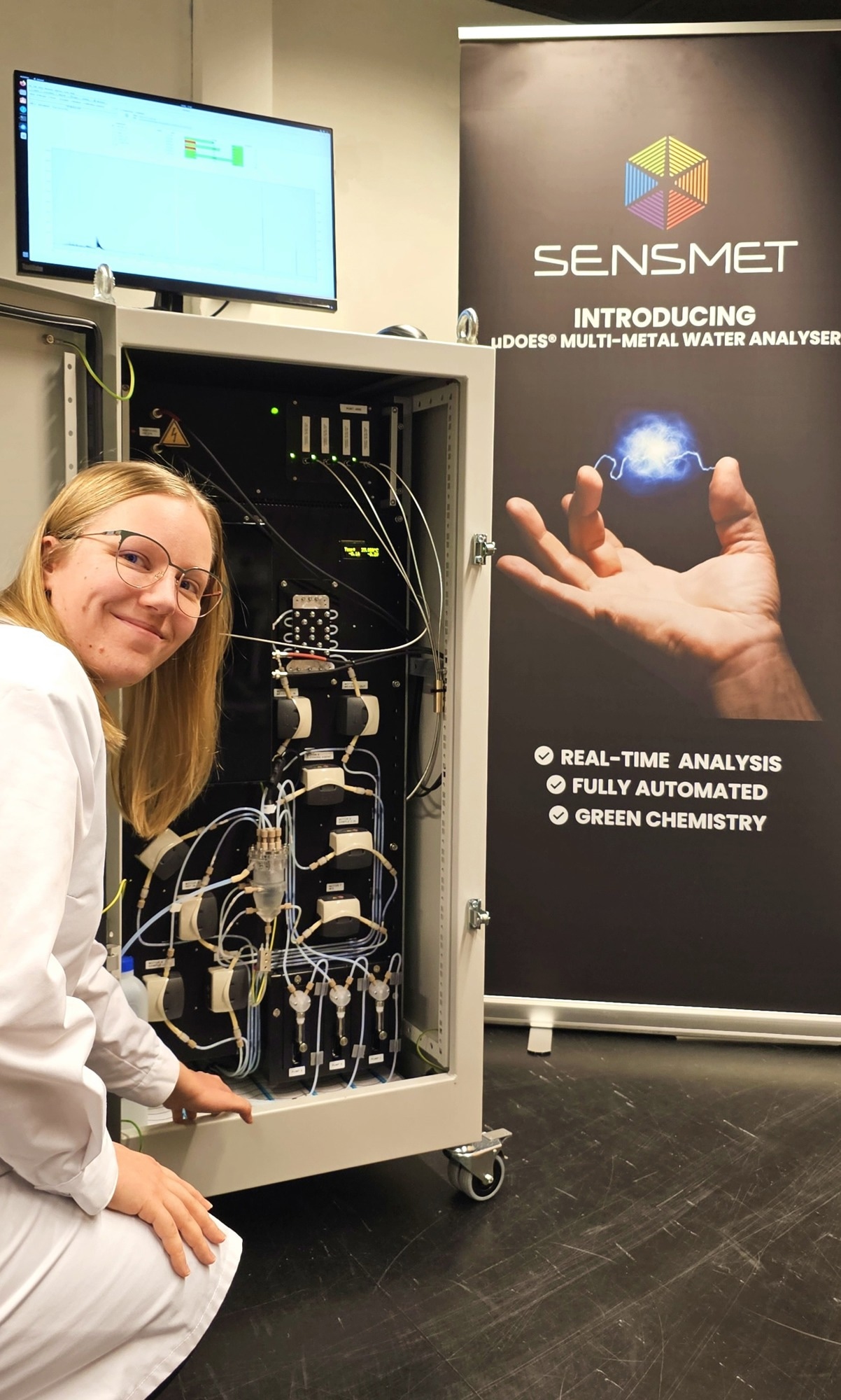Sensmet’s continuous metals monitoring technology has been evaluated in a field trial conducted by Metso at its facilities in Pori, Finland. The trial compared Lithium and Sodium measurements by laboratory ICP-OES analysis with the Sensmet µDOES® continuous analyzer, and demonstrated excellent correlation between the two different methods.

Image Credit: Sensmet
Traditionally, hydrometallurgical production processes have relied heavily on regular sampling and laboratory analysis for process control. However, as Sensmet CEO, Dr Toni Laurila explains: “Lab analysis is costly and incurs a significant delay, which means that real-time control of such processes has not hitherto been possible. Importantly, this trial was conducted under field process conditions, and has confirmed the widely held view that our µDOES® continuous metals analyser represents an enormous opportunity for the optimization of lithium production processes.”
Comparing µDOES® with Lab ICP-OES
During the trial, samples were taken from a process in which battery-grade lithium hydroxide monohydrate was produced from spodumene concentrate treated by high-temperature conversion in a rotary kiln. The hydrometallurgical technology, developed by Metso, produces battery-grade lithium hydroxide monohydrate by soda pressure leaching. In this application, the analytical performance of the µDOES® analyser was evaluated for the continuous optimization of pressure leaching and conversion leaching.
Over sixty samples were drawn from the process and analysed by a µDOES® continuous analyser and a laboratory ICP-OES. Sodium and lithium concentrations were measured in each sample, and the results showed an excellent degree of correlation between the online instrument and laboratory reference analysis. The calculated R² (coefficient of determination) for the two elements were 0.98 for the lithium comparison and 0.95 for sodium.
“We were impressed by the outcomes of the measurement campaign, conducted in a challenging environment replicating real-life conditions. Despite the rigor, the µDOES® and ICP-OES delivered congruent results," explains Metso’s Veli-Matti Järvinen, Vice President – Automation Product Group. "This is significant — we anticipate that the µDOES technology will bring substantial value to the realms of battery metal production and recycling processes when integrated to Metso Courier® HX system.”
µDOES® Inside
Metso is a global frontrunner in minerals processing and metals refining, possessing expertise covering the extraction of lithium from brines and pegmatite ores up to battery-grade lithium salts. When it comes to adopting analytical technologies into production processes and automated measurement systems, Metso upholds the most stringent standards for technology reliability.
The Metso evaluation confirmed the exceptional performance and great potential of µDOES® to transform the way Li and Na analyses are conducted in brines. Following the trial, Metso will adopt µDOES® technology in selected Courier® HX systems for Li and Na analysis, and the new systems will be available globally in 2024.
Explaining the importance of the Metso trial, Sensmet CEO, Dr Toni Laurila says:
“Previously, we have demonstrated the advantages of µDOES® in battery metal analysis; delivering increased efficiency, lower costs, and improved product quality. However, one of the first questions that every customer asks is: do we have comparison data with laboratory ICP-OES from real processes?
“We are therefore delighted that an industry leader like Metso has performed such a verification and shared these exciting results. The Li and Na comparisons with ICP-OES illustrate the high analytical performance of the µDOES® and the tremendous potential of real-time analysis in brines.”
Sensmet’s patented µDOES® technology is based on atomic emission spectroscopy. A micro-discharge (electric spark) is created directly inside the aqueous sample, causing a microscopic volume of the fluid surrounding the spark to be flash-heated to 10,000 °C. Molecular species in the micro-discharge are dissociated into atoms, which are excited to their respective higher electronic states. Upon returning to their ground state, these atoms release their excess energy by emitting light at their characteristic wavelengths. The µDOES® measures this atomic emission spectrum to derive quantitative analysis of the metals contained in the sample.
µDOES® is able to continually repeat these measurements 24/7 delivering results with a user-selectable measurement interval of 5 - 30 minutes.
Summarising, Sensmet CEO Toni Laurila commented: "The third-party evaluation shows how µDOES® technology allows operators to consistently produce high-quality, continuous 24/7 measurements, akin to results obtained in a laboratory. This capability is accessible directly at the process plant, avoiding the delays of lab analyses, and exploiting the benefits of real-time process monitoring."
Source: http://www.sensmet.com/